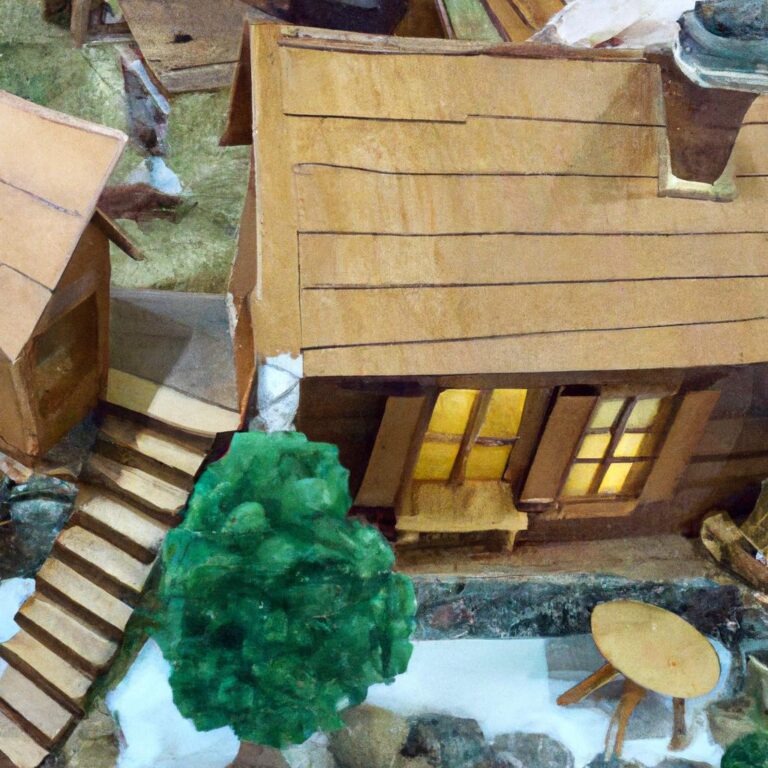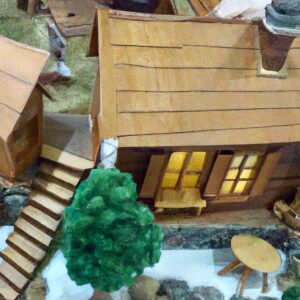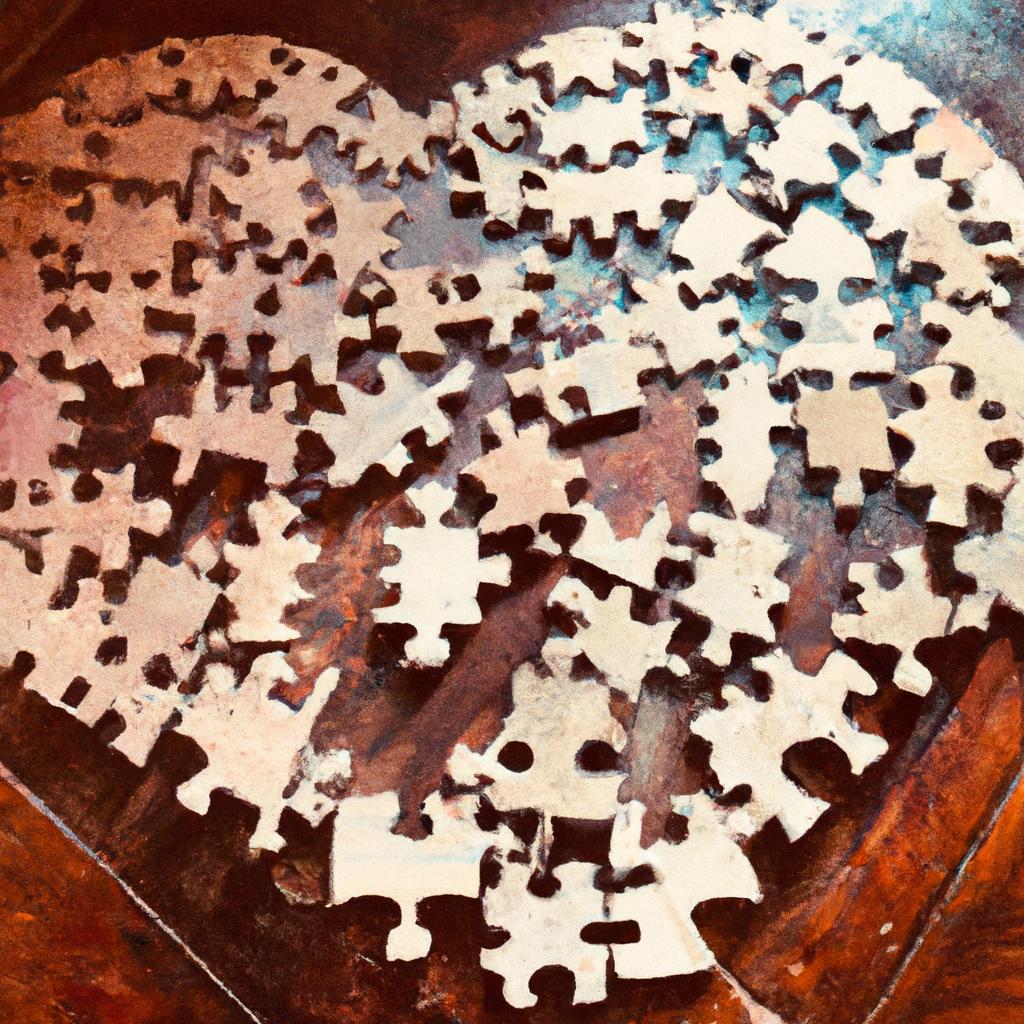Introduction
Are you ready to explore a world of miniature possibilities? Building dollhouses and dioramas is a fun way to combine creativity with practicality. People have been creating these miniature worlds for centuries, and today, anyone can craft a beautiful, customized scene that perfectly brings their imagination to life.
Dollhouses date back as far as the 17th century, although they have a variety of other names, including but not limited to “baby house” and “paper house” historically. Despite their small size, these tiny replicas offer people a chance to explore furniture placement, color palettes, and more when it comes to interior design.
Creating dioramas is another popular way to build miniatures. A diorama is a three-dimensional model typically depicting a scene from nature, history, literature, or everyday life, either miniature or full size. While these models can look incredibly complex, many start with simple materials like cardboard, sticks, and glue.
In this guide, you will learn how to create your own miniature world, from choosing materials to customizing the final outcome. Let’s get started!
Overview of Materials & Tools Needed
Creating miniature dollhouses and dioramas requires certain materials and tools in order to construct and customize these tiny works of art. While there is no one exact set of supplies needed for any kind of miniature project, here is an overview of some common items.
Basic Supplies
The most important supplies for creating the structures for dollhouses and dioramas are wood sheets and glue. You will need at least one type of material to serve as the base, such as a wooden surface or foam board. As for wood, the type and thickness of wood needed can vary depending on the size and complexity of the project. Glue should preferably be strong and clear to ensure the pieces remain securely connected. Other helpful tools you may consider include scissors, wire cutters, pliers, sandpaper, and a ruler.
Figures and Furniture
Various figures, furniture, and accessories can also be used to bring your dollhouse or diorama to life. This could include people, animals, cars, trees, buildings, toys, decorative items, and more. When selecting figures and accessories, it is important to take into consideration the desired scale for the scene, as this will affect the size of the objects you choose.
Customization Materials
In addition to the basic supplies and figures, there are many ways to customize and add unique touches to a miniature world. For example, one could use paint, paint markers, wire, fabric, and other craft materials to give their creations a personalized flair. Additionally, 3D printing has become increasingly popular for adding intricate details that otherwise may not be possible.
DIY Dollhouse Construction
Creating dollhouses from scratch is a fun and creative way to make your own miniature worlds. With a few basic supplies and some simple modifications, you can create a beautiful and unique dollhouse that’s perfect for hours of imaginative play. Here are some steps to get you started:
- Choose your materials – Select the type of wood, foam board, or other materials that you would like to use for the walls, floors, roofs, and other elements of your dollhouse.
- Measure and cut – Measure your materials and cut them to size with a saw or other cutting tool. Make sure to follow all safety precautions when working with sharp objects.
- Assemble the pieces – Begin putting together the pieces of the dollhouse, using wood glue or another adhesive to attach the components. This is a great time to practice fine motor skills and precision.
- Add your personal touches – To make your dollhouse truly unique, consider adding decorations such as small furniture, figures, walls, windows, and anything else you can think of. Have fun coming up with ideas that will give the dollhouse character!
Remember, you don’t have to follow a strict set of rules when constructing your dollhouse – be creative and go with what works for you. If you need help getting started, there are plenty of resources available online to guide you through the process.
Diorama Creation Process
Creating a diorama is a fun and creative way of depicting a scene in miniature. To make sure your diorama looks its best, certain materials work better than others. Commonly used materials for dioramas include foam board, balsa wood, modeling clay, card stock, felt, tissue paper, and polymer clay. Popsicle sticks and toothpicks can be used to construct small objects such as furniture, while styrofoam balls are perfect for making hills and mountains.
Determining Scale
When selecting figures, buildings and other elements for your diorama, it’s important to determine the scale of your creation. This means choosing items that are appropriately sized to each other. For example, if one figure is 1 inch tall, then a house should be 2 inches tall if you’re creating a 1:2 ratio.
Scale ratios are easy to remember by converting the ratio into feet or inches. For instance, a 1:24 scale ratio is the same as a 1 foot to 2 inch ratio. This means that if the true height of an object is one foot, then its representation in the diorama should be 2 inches.
Customizing Your Miniature Worlds
Creating a miniature world doesn’t just mean constructing basic features. You can give your dollhouse and diorama a unique look and feel by customizing them with decorations and other elements. There are lots of options for decorating depending on the type of dollhouse or diorama you’re making.
Dollhouse Customization Ideas
For dollhouses, consider using paint or special paper to give the walls and floors a different look. You can also use small fabric pieces to furnish the interior, such as rugs or curtains. Add furniture and accessories to make each room look complete. Detailing your individual rooms and adding things like light fixtures, furniture knick-knacks, or even a pet can make your dollhouse come alive! If you’re feeling creative, you can even create one-of-a-kind items and sculptures from wire, polymer clay, or wood.
Diorama Customization Ideas
For dioramas, think about the materials you use to build your scene. For a woodland theme, incorporate twigs, moss, and stones. For a beach theme, try shells, sand, and coral. To add more character to your diorama, consider including figures, animals, and other small objects. You can also paint the figures and objects to give them more detail and realism.
Finding Supplies
You can find supplies for customizing your dollhouse or diorama at craft stores, online shops, or even by upcycling old items. Look for items such as fabric, beads, and miniature figurines that can be used to bring your miniature world to life.
Conclusion
Creating miniature worlds through dollhouses and dioramas is an activity that dates back centuries. It is a craft that is beloved by children and adults alike, as it offers a chance to express creativity in new ways. In this guide, we have discussed materials needed, the processes for creating dollhouses and dioramas, and how to customize creations to make them truly unique. From assembling small furniture from scratch to selecting miniature figures, dollhouses and dioramas offer endless possibilities.
If you are interested in learning more about creating miniature worlds, there are plenty of resources available online. Websites like Pinterest offer ideas on dollhouse construction, accessories, and decorations. There are also numerous books and magazines that feature dollhouse and diorama creation ideas. You can even join hobbyist groups to connect with others who share your enthusiasm for miniatures.
Thank you for reading our guide on creating miniature worlds with DIY dollhouses and dioramas! We hope that you find our advice and tips helpful in crafting your own unique creations. Happy Creating!
comments: 0





